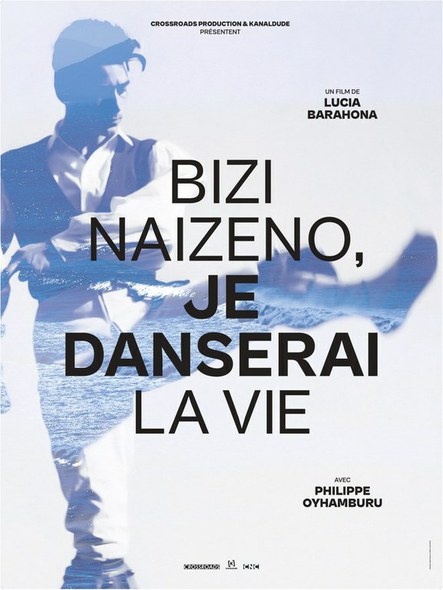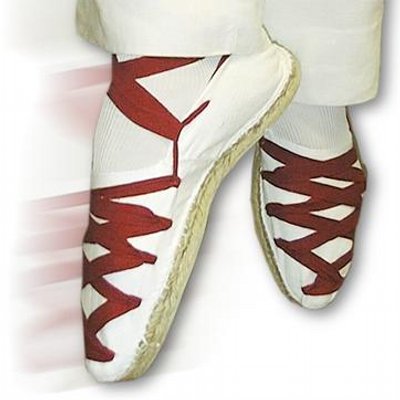Felipe Oihanburu, Basque dancer and choreographer dies
- Dancer, choreographer, choir director, writer… died at 102 years old at his home in Biarritz (Argeles Gazost-Miarritze, 1921-2023). In fact, he received the Biarritz Gold Medal for all his work in Basque dance and music. It starts with Olaeta's Second in Basque dance. From 1945 to 1953 he was artistic director of the Oldarra group and from 1953, for 30 years, director of the semi-professional group of singing and dance Etorki. He has danced around the world and visited over thirty countries with his dance groups. Its aim has been to make Basque dances known to the world and has worked professionally in the presentation of shows based on Basque dances abroad.


Olaeta, Oldarra, Etorki
He spent his childhood in Montevideo and Paris, but the summer holidays were with his family in Hendaia; in 1939, they moved to Biarritz, their father retired, and returned home. At that time he met several Basque refugees, and as a result of these relations he became Basque and began to learn Basque. In 1937 and 1939 he saw two performances by Eresoinka, which usually says that the spectacularity of the exiled Basque Government was the starting point of his artistic life.

When the Second World War broke out, the Elai-Alai dance groups, led by Eresoinka and Olaeta’s Second, were dissolved. In 1941 Olaeta founded another group of dances in Biarritz with his children, with a few counts and with several young people from the town. Oihanburu started working as an accordionist in the group and then danced. In 1944 he occupied the artistic leadership of the group.

In 1945, he decided to rename the ballet Olaeta and named Oldarra and directed Oihanburu. They danced in different places in the world such as Bordeaux, Paris, Hego Euskal Herria, Madrid, Belgium, Denmark, Sweden or Venice. Due to the political discrepancies, the group split and Oihanburu abandoned it in 1953.
About Felipe Oihanburu in the Txirrita program of the chain France 3 Aquitaine, 13-01-2013.
Together with Oihanburu, half of the dantzaris left and immediately founded the Etorki group, with shows based on Basque dance and ballet, with 30 years of career. London, Belgium, Germany, Venezuela, Tunisia, Turkey, Greece or the tables of the Soviet Union.

However, it was difficult to keep that professional group of dances, and they spent several hard, debt-laden moments without being able to make a living dancing. In those times of conflict, Oihanburu worked on radio, FranceCulture and Radio France Pays Basque. He has also written several books on dance, Basque surnames and politics.
I live, I'll dance life
Lucia Barahona, Oihanburu's granddaughter, presented this year a documentary telling her grandfather's life: I live, je danserai la vie. On June 25, 2023, he premiered at Le Royal in Biarritz, just before Oihanburu was 102. In recent months it has been projected in different corners. It is a project presented by Crossroads Productions and Kanaldude, directed by Barahona. For ten years, he's taken pictures of his grandfather.

Here are the images and testimonies Kanaldude collected on the premiere day:
About Felipe Oihanburu
- Authors: Felipe Oihaburu (Eneko Bidegain, 2007)
- Membranes, Felipe Oyhamburu (Xabaltx, 2008)
- Felipe Oihanburu: "We got very good reviews, but we didn't have money!" (2008)
Visit to Felipe Oihanburu (2009)
- Remembrance (2011)
Timbre: Felipe Oihanburu (2013)
- Radio Paris, 1960s: Felipe Oihanburu and Etxahun Iruri (2013)
- Felipe Oihanburu, Ambassador of Basque Culture (2015)
I remember: Jean Nesprias (84 years), Philippe Oyhamburu (90) and Koldo Zabala (75) dancing (2011)
- Felipe Oihanburu: people and anecdotes (2018)
- Felipe Oihanburu, an elegant saltinbank that has crossed the world (2018)
- 100 years of Felipe Oihanburu + Video of the birthday party of Maritzuli. (2021)
- Oihanburu and Urbeltz, two Basque dance restorers (2023)
The idea that we in the dance world often repeat is that dance is ephemeral. The Elhuyar dictionary gives as a counterpart to "ephemeral" English: ephemeral, destructive, perishable, ephemeral, ephemeral, perishable, perishable, ilaun. I don't remember who I first read that idea... [+]
Transmisioa eta dantza taldeetako erreleboa aztertu nahi izan dugu Dantzan Ikasi topaketetan, eta gazte belaunaldiek lan egiteko ereduak ezagutu nahi izan ditugu “Gazteen parte-hartzea euskal dantzan” mahai inguruan: Eder Niño Barakaldoko... [+]
Aste hondar honetan euskal dantzen hiriburu bilakatu da Hendaia. Akelarre dantza talde hendaiarraren 50. urtemugaren testuinguruan, Lapurdi, Baxe Nafarroa eta Xiberoako hamasei dantza talde elkartu ditu bertan Iparraldeko Dantzarien Biltzarrak.





















